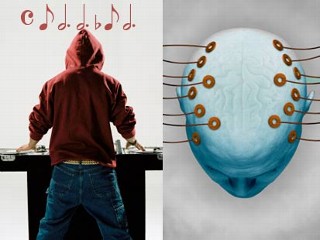 A piece of the brain's hypothalamus (shown in middle of the above model) is key to animals' fear of territorial rivals and predators, according to a new study. Without it, animals lose all sense of caution. (Credit: iStockphoto/Karen Roach)
A piece of the brain's hypothalamus (shown in middle of the above model) is key to animals' fear of territorial rivals and predators, according to a new study. Without it, animals lose all sense of caution. (Credit: iStockphoto/Karen Roach)From Science Daily:
ScienceDaily (Mar. 15, 2009) — Mice lose their fear of territorial rivals when a tiny piece of their brain is neutralized, a new study reports.
The study adds to evidence that primal fear responses do not depend on the amygdala – long a favored region of fear researchers – but on an obscure corner of the primeval brain.
A group of neuroscientists led by Larry Swanson of the University of Southern California studied the brain activity of rats and mice exposed to cats, or to rival rodents defending their territory.
Both experiences activated neurons in the dorsal premammillary nucleus, part of an ancient brain region called the hypothalamus.
Read more ....
















